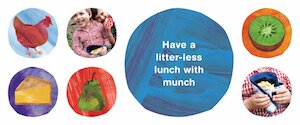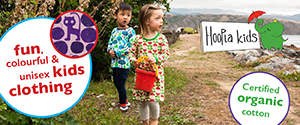 Since having kids I have become even more conscious of what actually goes into the many products we use on a daily basis. So this post is all about healthy hair care for the family, which is a big part of our general family health. But more importantly I wanted to write something about what actually goes into hair care products and how you find such information.
Since having kids I have become even more conscious of what actually goes into the many products we use on a daily basis. So this post is all about healthy hair care for the family, which is a big part of our general family health. But more importantly I wanted to write something about what actually goes into hair care products and how you find such information.
My mum who is now in her early 70’s always looks immaculate, she is very stylish for her age and her hair always looks amazing. There is one thing I love about my mum (in fact there are many, she is my mentor) and that is she always looks so natural and is conscious of the over marketed beauty products and what goes into them. Having re read this sentence I just want to reiterate mum still wears lippy and make up, just incase you had an old hippy lady in your imagination. In fact mum only started using facial moisturiser 10 years ago. I suppose her questioning of what goes into beauty products and the importance of natural beauty has rubbed off on to me. Although sometimes my natural appearance can look a little shabby which is mainly down to laziness and tiredness from chasing after three little people.
Healthy hair care for the family – What goes in?
So, in thinking about healthy hair care for the family, what really goes into a hair product?
Sodium Lauryl Sulphate (SLS) and Sodium Laureth Sulphate (SLES) are often found in beauty and household products because they’re cheap and they perform a simple task really well. They make long-lasting bubbles and it’s hard for us to get away from the idea that more bubbles equals better cleaning power. As a result SLS and SLES are used in hundreds of products, from dishwashing liquid to shampoo. Even some ‘eco’ brands use these chemicals.
How can SLS and SLES affect your health? SLS is used in many cleaning products yet it’s a known skin irritant and is also used in clinical studies to induce contact dermatitis, and make the skin absorb other products more easily. SLES are also used in many cleaning and body care products, including dishwashing liquid and shampoo. Yet due to the synthesis process it goes through, it can be contaminated with 1,4-dioxane, a suspected carcinogen. Some products containing sodium laureth sulphate have already been found to contain low levels of 1,4-dioxane.
So how do we know what goes into some of these products, should they be a part of healthy hair care for the family? This leads me to the same ‘bug bear’ I have with food labelling, which is simply the whole labelling system needs an overhaul.
Labelling
Cleaning product brands aren’t obliged to be transparent about what is in their products so it is often impossible to know what is in their products or to research their ingredients.
Many questionable chemicals are sanctioned by regulatory bodies meaning that the burden of proof is on individuals to prove that a chemical is unsafe rather than on companies to prove that they are safe.
Even when you have groups of scientists, doctors, lawyers and consumer watchdog groups raising red flags and calling for change, they are often ignored. It can sometimes take years for legislation to change. Two examples of this are the continued use of Teflon (non-stick coating for cookware) and BPA which is used in the lining of canned foods.
SLS and SLES go by many other names, or may just be listed as ‘Anionic surfactants.
It does concern me how many people suffer from Food Allergies and Excema these days. You really do have to think twice about what is going into products that we use and consume. So what are some of the brands in New Zealand that do not use the above chemicals and are honest on their labelling? So far I have found one which is ecostore. But are there more? Surely there are?
Anyhow, must go and wash my hair while the kids are out. I don’t know about you but I find it hard to shower in the morning with trying to organise little people so I find nights are the best time to spend some time on my appearance. I chose the above image for this post as it just highlights to me how riducous marketing of beauty products has got. How real is that hair? Beautiful photoshop hair that is so natural, not. Anyhow that is another post to come – Marketing of beauty products, good or bad?






